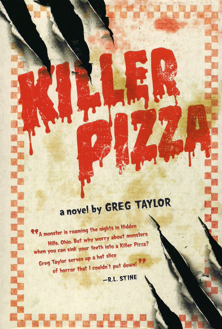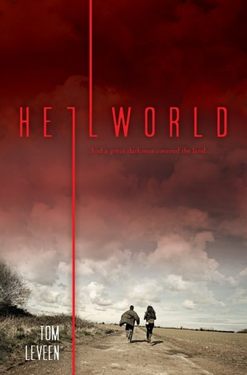
The ‘Killer Pizza’ Series by Greg Taylor
Here is an especially horror-filled series of books that will leave you shivering and hungry. High School


Have you ever wondered what some of the world’s most disgusting-sounding dishes are? If you think eating broccoli or anchovies sounds unappealing, just wait until you hear what’s on the dinner table around the world!
Cow’s intestines, jellied eels, gigantic tuna eyeballs, stinky herrings. These might sound like disgusting ingredients to make witches’ potions with, but no, they are delicious and exclusive delicacies served in different parts of the world.
While every page might not make your mouth water, this book aims to question what we consider disgusting and to show the incredible diversity and creativity of the world’s cuisine. Dish by dish, you’ll also discover surprising stories and historical facts.
This book features nineteen disgusting delicacies, ranging from ‘icky,’ ‘stinky,’ ‘cruel,’ and ‘does not seem safe for human consumption.’ Many are eaten for special occasions; some are considered exclusive and expensive delicacies. The Merriam-Webster dictionary defines a delicacy as “something pleasing to eat that is considered rare or luxurious.” Rare, yes. All of the meals include ingredients that are difficult to acquire. Luxurious, sort of. The meals are costly, but are they really desirable? Pleasing, depends on who you ask.
The history of these meals are fascinating. It’s curious how many of these meals originate from eating something out of desperation when there was nothing else to eat.
Here’s a little snippet of my opinion about each meal:
Frog Shake: Dear lord. I hope those frogs are dead before they are put in the blender.
Ant Larvae: Not that gross compared to the other meals in this book. Similar to eating fish eggs, i.e., caviar.
Fried Testicles: Edible, but ugh.
Fermented Birds: Fermenting birds in a gutted seal was the Inuit people’s way of conserving food. There is no reason people should be eating this in the present day.
Cured Shark: In the age of Vikings, there was not much else to eat, so the Greenland shark was their primary food source. Another meal people don’t need to eat in the present day.
Jellied Eels: Eels, while icky, turned out to be an excellent food that was close at hand, cheap, and nutritious during London’s industrial revolution.
Blood Soup: People didn’t want to waste all that perfectly good slaughtered animal blood, so they made a soup out of it.
Snails: I’m fond of snails, so I don’t like eating them.
Duck Liver Pâté: I didn’t know that the birds are force-fed to fatten their liver. That’s just cruel.
Stewed Cow’s Intestines: Making use of the less important parts of a slaughtered animal.
Maggot Cheese: Usually, when food has maggots crawling inside it, you don’t eat it. Not in this case.
Stinky Herrings: Fermented fish in a can. Yum. Note that was sarcasm.
Hairy Caterpillars: Tasteless but crunchy. I was surprised to learn that the caterpillars aren’t eaten whole but have their guts squeezed out like a tube of toothpaste.
Fresh Milk and Blood Shake: This concoction is not cooked or boiled like the blood soup. This is fresh blood and fresh milk straight from the cow. They beat the mixture before drinking it, but drinking it cannot be safe.
Poop Coffee: The pooped-out coffee beans are washed before they are ground up, so that’s reassuring.
Fried Tarantula: Cambodians eat a wide selection of insects, tarantulas being the most expensive.
Stinky Tofu: Apparently, the worse it smells, the better it tastes. I’ll take their word on it.
Wriggling Live Octopus: This is so much worse than it initially sounds. The preparation is worse than the act of eating it.
Giant Tuna Eyeballs: Did you know that tuna eyeballs are the size of tennis balls?! I didn’t!
While gross and stomach-churning, this was still an enjoyable read. I leave you with this question: If a food is described as ‘putrid,’ ‘rancid,’ or ‘rotten,’ should you really be eating it?

Here is an especially horror-filled series of books that will leave you shivering and hungry. High School

HAPPY 150TH BOOK REVIEW And to celebrate, here is a book of short horror stories written specifically for young readers. 5 to 95 (Suggested for

High School Sixteen-year-old Sarah Meadows longs for normal. Born with a port-wine stain covering half her face, shes been plagued by stares, giggles, bullying, and

Here is an especially horror-filled series of books that will leave you shivering and hungry. High School

HAPPY 150TH BOOK REVIEW And to celebrate, here is a book of short horror stories written specifically for young readers. 5 to 95 (Suggested for all readers) Featuring twenty-six terrifying short stories, each based on a different A to Z

High School Sixteen-year-old Sarah Meadows longs for normal. Born with a port-wine stain covering half her face, shes been plagued by stares, giggles, bullying, and disgust all her life. But when shes abducted on the way home from school, Sarah

HAPPY OCTOBER! To celebrate October, heres a hell-raising story to get us in the Halloween mood. Pun intended. High School Five years ago, Abby Booths mom, co-host of a ghost-hunting reality show, went missing while filming in a haunted cave


Albert, Houdini & Maddie
Copyright © 2021 Amazing Artists Online – All Rights Reserved
Developed by Clearian
Copyright © 2023 Amazing Artists Online – All Rights Reserved
Developed by Clearian